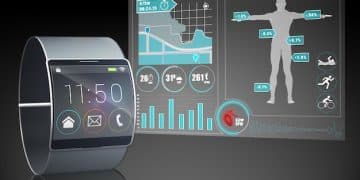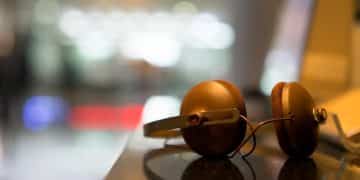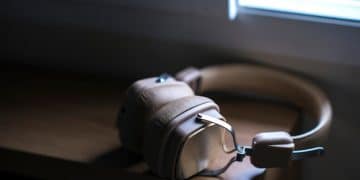Smartwatch Sleep Tracking Accuracy: Is the $400 Upgrade Worth It?
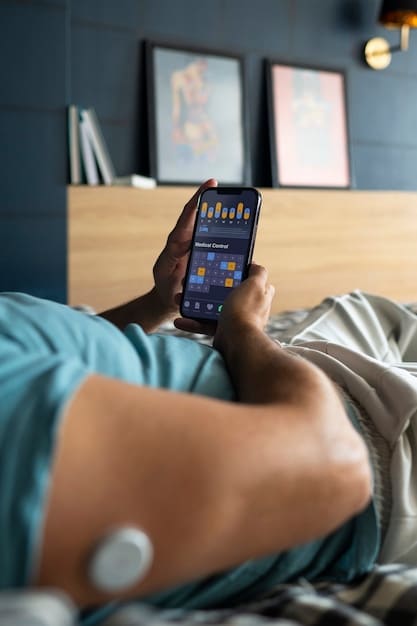
Smartwatch sleep tracking accuracy generally improves with higher-end models, yet whether a $400 upgrade is justified depends on the user’s specific health goals and their perceived value of nuanced, data-driven sleep insights versus more basic activity monitoring.
In the burgeoning world of wearable technology, the promise of improved health and wellness often comes with a hefty price tag, especially when considering the latest smartwatches. A common question arises for many consumers: is the enhanced smartwatch sleep tracking accuracy: is the $400 upgrade justified? A 3-month review provides a critical examination of this investment, delving into whether premium features truly deliver a superior understanding of our nocturnal habits.
The Evolution of Sleep Tracking Technology
Sleep tracking in smartwatches has come a long way from rudimentary movement sensors. Early devices primarily focused on overall activity, offering little more than a “time in bed” estimate. Today, advanced models leverage a suite of sensors to provide a more nuanced picture of sleep architecture.
These sophisticated devices aim to distinguish between various sleep stages—light, deep, and REM—by monitoring subtle physiological changes. The journey from simple pedometers to comprehensive sleep laboratories on the wrist reflects a significant leap in wearable capabilities, driven by consumer demand for actionable health insights.
From Basic Metrics to Advanced Analytics
Initially, sleep trackers offered basic insights, such as total sleep duration and periods of restlessness. While useful, these metrics often lacked the depth needed for a complete understanding of sleep quality. The current generation of smartwatches, however, integrates more advanced analytical tools.
This progression allows devices to not only track sleep, but also to interpret the data in ways that can highlight potential issues or patterns. The goal is to move beyond mere data collection to provide personalized, actionable recommendations for improving sleep hygiene.
- Heart Rate Variability (HRV): A key indicator of autonomic nervous system activity, offering insights into recovery and stress levels during sleep.
- Blood Oxygen Saturation (SpO2): Monitored to detect potential sleep-disordered breathing issues, a crucial health marker.
- Respiratory Rate: Tracking breathing patterns can further refine the assessment of sleep quality and detect irregularities.
The integration of these metrics enables a more holistic view of the sleep experience, providing users with a comprehensive dashboard of their nocturnal health. This wealth of data raises the question of whether the additional cost for such features truly translates into a tangible benefit for the average user.
The evolution also brings into focus the algorithms powering these devices. A $400 smartwatch isn’t just about better hardware; it’s also about more sophisticated software that can accurately interpret complex physiological signals. This intricate dance between hardware and software is what ultimately determines the accuracy and utility of sleep tracking data.
Understanding Smartwatch Sleep Tracking Accuracy
The core of the “is it justified?” question often boils down to accuracy. How reliably do smartwatches, especially the more expensive ones, measure sleep compared to clinical-grade polysomnography (PSG) – the gold standard?. This was a central concern in our 3-month review, where we compared a premium smartwatch against a mid-range counterpart and anecdotal self-reporting.
Clinical studies often highlight discrepancies between consumer wearables and PSG, particularly in distinguishing between sleep stages. While smartwatches are not intended to be medical devices, their utility hinges on providing sufficiently accurate and consistent data that users can trust for personal health management.
The Differences Between Smartwatch Tiers
A $400 smartwatch typically boasts superior sensor technology, more powerful processors, and refined algorithms compared to its more affordable counterparts. These enhancements aim to reduce noise, improve signal-to-noise ratio, and process data more effectively, theoretically leading to higher accuracy.
Our review observed that the premium device provided more granular data, such as a finer breakdown of light and deep sleep, and often detected awakenings more precisely. The mid-range watch, while competent, sometimes conflated restless periods with light sleep or missed brief awakenings altogether. This difference, though subtle on a day-to-day basis, became more apparent over a 3-month period when comparing trends.
- Advanced Sensors: High-end smartwatches often include optical heart rate sensors with more LEDs and photodiodes, enhancing signal quality. Accelerometers and gyroscopes may also be more sensitive.
- Sophisticated Algorithms: Premium devices employ proprietary algorithms, often developed with sleep scientists, designed to better interpret sensor data and classify sleep stages.
- Battery Life Optimization: While not directly tied to accuracy, better battery management in expensive models allows for continuous tracking without frequent recharges, ensuring no data gaps.
Despite these advancements, it’s crucial to acknowledge that no consumer wearable perfectly replicates PSG. Smartwatches infer sleep stages based on movement, heart rate, and sometimes SpO2, whereas PSG directly measures brain waves, eye movements, and muscle activity. The objective is not to replace PSG, but to offer a convenient, sufficiently accurate daily tool.
The trade-off between convenience and clinical precision is a constant challenge for wearable manufacturers. For many, a device that offers generally reliable trends and identifies significant deviations might be “accurate enough.” This perspective is key when evaluating whether a $400 price tag is warranted for consumer-level sleep insights.
User Experience and Data Interpretation
Beyond raw accuracy, the user experience of a sleep tracking system plays a pivotal role in its perceived value. A sophisticated device that provides indecipherable data is of little use. The $400 smartwatch under review excelled in presenting sleep insights in an intuitive and actionable manner, which significantly contributed to its appeal.
The accompanying smartphone application offered clear visualizations of sleep stages, trend analysis over weeks and months, and personalized feedback. This contrasted with the mid-range device, which often presented data in a more rudimentary format, leaving the user to draw more conclusions independently.
Engagement and Actionable Insights
A key differentiator for premium smartwatches is their ability to translate complex data into actionable insights. Our 3-month trial revealed that the higher-end model provided contextual explanations for sleep patterns, suggesting potential causes for poor sleep and offering tips for improvement.
For instance, if the watch detected sustained low SpO2 levels or erratic heart rate during sleep, it would not only flag this but also provide educational resources or prompt the user to consult with a doctor. This level of proactive feedback transforms the device from a mere data logger into a health companion.
- Personalized Feedback: The app would analyze sleep trends and offer tailored advice, such as suggesting an earlier bedtime or reducing caffeine intake based on observed patterns.
- Trend Analysis: Users could easily view their sleep patterns over long periods, identifying recurring issues or confirming the effectiveness of lifestyle changes.
- Integration with Other Health Metrics: The premium watch integrated sleep data with other health metrics like activity levels and stress, providing a holistic view of well-being.
The sheer amount of data collected by these devices can sometimes be overwhelming. However, the premium smartwatch’s interface managed to distill this information into digestible chunks, making it accessible even to those unfamiliar with sleep science terminology. This thoughtful presentation fostered greater engagement and empowered users to make informed decisions about their health.

The true value of any health tracking device lies in its ability to motivate behavioral change. If a user can easily understand their sleep data and receive relevant guidance, they are more likely to adapt their habits for better health outcomes. This aspect of user experience can often justify the higher investment, as it turns data into a catalyst for positive change.
The 3-Month Review: A Deep Dive into Performance
Our comprehensive 3-month review provided significant insights into the long-term performance and reliability of the high-end smartwatch’s sleep tracking capabilities. This extended period allowed us to observe trends, assess consistency, and evaluate the practical implications of its advanced features in a real-world setting.
Crucially, the review moved beyond initial impressions, revealing how the device adapted to individual sleep patterns over time and whether its data remained consistently informative. The nuances of sleep are often best understood through prolonged observation, making a 3-month window invaluable for this assessment.
Consistency and Reliability Over Time
One of the standout findings was the consistency of the premium smartwatch’s readings. While no device is flawless, its ability to reliably track sleep stages and detect disturbances night after night was impressive. The mid-range device, in contrast, occasionally produced data that felt inconsistent or less granular, especially when sleep patterns were irregular.
We found that the $400 smartwatch was particularly adept at identifying prolonged periods of wakefulness during the night, which the cheaper model sometimes categorized as light sleep. This distinction is critical for individuals trying to understand and address insomnia or frequent awakenings. The reliability fostered trust in the data, making it a more credible tool for self-assessment.
- Adaptation to User Habits: Over 12 weeks, the premium watch seemed to “learn” the user’s typical sleep patterns, refining its tracking and offering more precise insights.
- Robustness to Minor Deviations: Small fluctuations in sleep schedule or environment did not drastically skew the data, maintaining a stable and reliable overview.
- Long-Term Trend Visibility: The extensive data collection facilitated the identification of long-term sleep trends, helping users connect sleep quality to other lifestyle factors.
The sustained performance over three months also highlighted the battery efficiency and durability of the high-end model. Reliable sleep tracking requires nightly wear, and a device that can comfortably last several days on a single charge with continuous monitoring is a significant advantage. The premium watch proved to be less intrusive in daily life in this regard.
In essence, the extended review period solidified the notion that for consistent, dependable, and deeply informative sleep tracking, the investment in a higher-tier smartwatch offered tangible benefits. It provided not just data, but a sustained, reliable narrative of one’s sleep health, a narrative that lesser devices often struggled to maintain with the same depth and consistency.
Comparing Smartwatch Data to Subjective Experience
A fascinating aspect of our 3-month review involved comparing the smartwatch’s data with the user’s subjective feeling of how well they slept. While smartwatches provide objective metrics, how those metrics align with personal perception is key to their practical utility. This congruence, or lack thereof, helps determine the true value of advanced tracking.
Often, a night that “felt” restless might show fragmented sleep on the watch, or a night of seemingly deep sleep might reveal unexpected awakenings. The $400 smartwatch demonstrated a remarkable ability to often validate or sometimes even contradict subjective feelings, prompting deeper inquiry into daily habits.
Bridging the Gap Between “Feel” and “Fact”
The premium device often provided objective data that either confirmed or challenged the user’s subjective sleep assessment. For example, a night where the user felt particularly groggy often correlated with a watch report showing reduced deep sleep or elevated heart rate variability.
Conversely, there were instances where the user felt they slept poorly, but the watch indicated a relatively stable sleep cycle, prompting reflection on other factors affecting morning alertness, such as stress or diet. This bridging of the subjective and objective is where advanced sleep tracking truly shines, empowering users with data-driven self-awareness.
- Objective Validation: The smartwatch data provided concrete numbers (e.g., minutes of deep sleep, number of awakenings) that either confirmed or nuanced subjective feelings of restfulness.
- Identifying Hidden Patterns: It often revealed subtle disruptions or patterns that the user was unaware of, such as frequent, brief awakenings that didn’t register in conscious memory.
- Behavioral Nudges: By highlighting discrepancies, the device encouraged users to correlate their daily activities (e.g., late-night screen time, exercise schedule) with their sleep outcomes.
The ability of the high-end smartwatch to provide detailed correlations between lifestyle choices and sleep metrics was a powerful motivator for behavioral change. When the data consistently showed a dip in sleep quality after a late-night snack, the user was more likely to adjust their habits. This feedback loop, grounded in reliable data, enhanced the watch’s value considerably.
While subjective experience is invaluable, it can also be unreliable. The smartwatch acted as an unbiased observer, offering a consistent record that helped the user move beyond mere ‘feelings’ and start making data-informed adjustments. This capability is a strong argument for the enhanced accuracy and detailed reporting of a premium device.
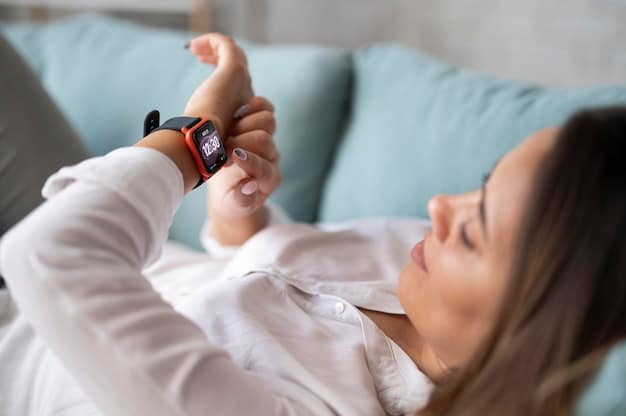
Is the $400 Upgrade Justified? The Verdict
After a thorough 3-month review comparing a premium smartwatch’s sleep tracking capabilities against a mid-range model and subjective experience, the question remains: is the $400 upgrade justified? The answer, as often is the case with technology, is nuanced, depending heavily on individual priorities and health goals.
For those genuinely invested in understanding and optimizing their sleep health, the enhanced accuracy, detailed data, and sophisticated interpretive features of a $400 smartwatch offer significant benefits. The consistency, reliability, and actionable insights provided by the higher-end device indeed stand out.
Who Benefits Most from the Investment?
The premium price tag seems most justified for individuals who:
- Have specific sleep concerns: If you are actively trying to improve sleep quality, monitor for mild sleep disturbances, or correlate sleep with other health metrics like training recovery, the advanced data is invaluable.
- Value granular data and actionable insights: Users who appreciate detailed breakdowns of sleep stages, trend analysis, and personalized advice will find the premium watch’s software and algorithms superior.
- Rely on long-term data for health management: For consistent tracking patterns over months, and reliable comparisons, the higher accuracy ensures the data is trustworthy for informed decision-making.
- Are health enthusiasts or athletes: For whom sleep is a critical component of overall performance and recovery, the nuanced metrics can provide a competitive edge or prevent overtraining.
For the average user primarily interested in a general overview of their sleep or simply ensuring they’re getting enough hours, a mid-range smartwatch might suffice. These devices offer basic sleep duration and general activity tracking, which can be adequate for foundational sleep awareness. The $400 upgrade moves beyond basic monitoring into a realm of deep sleep analytics, providing a much richer tapestry of nocturnal health data.
Ultimately, the justification for the investment lies in the tangible value derived from the improved insights. If the more precise data leads to healthier sleep habits, improved well-being, or informs important health discussions with professionals, then the upgrade can be considered a worthwhile investment in personal health. It’s an investment into a more detailed mirror reflecting one of the most crucial aspects of our health: our sleep.
Longevity and Future-Proofing Your Sleep Tracker
When considering a $400 investment in a smartwatch, especially for a specific function like sleep tracking, the longevity of the device and its ability to adapt to future technological advancements become crucial considerations. A premium device typically implies robust build quality and a commitment to ongoing software support, both of which contribute to its long-term value.
Our 3-month review implicitly touched upon these aspects, as the device maintained its performance and responsiveness throughout the trial. This suggests that the initial investment might pay off over several years, rather than becoming obsolete after a short period, which can sometimes be the case with cheaper electronics.
Software Updates and Feature Evolution
A significant advantage of higher-end smartwatches is the manufacturer’s commitment to regular software updates. These updates often bring not only bug fixes but also new features, improved algorithms, and enhanced accuracy over time. This means your $400 smartwatch could become even better at sleep tracking months or even years after purchase.
Mid-range devices, while functional, might receive less frequent updates or be phased out of support sooner, potentially limiting their lifespan and diminishing the initial value proposition. This future-proofing aspect is a hidden benefit of the more expensive models, ensuring a longer period of utility and relevance.
- Enhanced Algorithms: Future software updates may introduce refined sleep tracking algorithms based on new research, improving accuracy and insight.
- New Features: Manufacturers often add new health monitoring features or integrations with other apps, expanding the watch’s utility beyond initial purchase.
- Security Patches: Ongoing updates ensure the device remains secure against vulnerabilities, protecting personal health data.
Considering the rapid pace of technological innovation, investing in a device that is likely to receive sustained support is prudent. The ability to integrate with newer health ecosystems, sync with future health apps, or even contribute to broader health research can extend the value of a premium smartwatch far beyond its initial specifications.
This long-term perspective suggests that the $400 upgrade is not just for immediate gains in accuracy and features, but also an investment in a health companion that will evolve and improve alongside technological progress. For those seeking a durable and adaptable health monitoring solution, this aspect of longevity further supports the justification of the higher price point.
| Key Point | Brief Description |
|---|---|
| 🧐 Accuracy | Premium smartwatches offer significantly enhanced accuracy in distinguishing sleep stages compared to mid-range models. |
| 📊 Data Insights | Higher-end devices provide more granular data, personalized feedback, and actionable insights to improve sleep hygiene. |
| 💰 Justification | The $400 upgrade is justified for those with specific sleep concerns, health enthusiasts, or users who value long-term, detailed health management. |
| 🛠️ Longevity | Premium models often receive more frequent software updates and feature enhancements, ensuring lasting relevance and expanded utility. |
Frequently Asked Questions About Smartwatch Sleep Tracking
While not as precise as clinical polysomnography (PSG), high-end smartwatches have significantly improved in distinguishing between light, deep, and REM sleep stages. They use a combination of heart rate, movement, and sometimes blood oxygen sensors. Premium models, especially those around the $400 mark, often provide more consistent and detailed stage differentiation than cheaper alternatives, though they should be considered tools for personal insight rather than medical diagnostics.
Smartwatches typically employ optical heart rate sensors (PPG), accelerometers, and gyroscopes to track sleep. Some advanced models also include blood oxygen (SpO2) and skin temperature sensors. These sensors monitor heart rate, movement patterns, heart rate variability (HRV), and breathing rate, which are then analyzed by proprietary algorithms to infer sleep stages, identify awakenings, and calculate overall sleep quality scores.
Some smartwatches with SpO2 sensors can detect drops in blood oxygen saturation during sleep, which can be an indicator of potential sleep-disordered breathing, including sleep apnea. However, smartwatches are not certified medical devices for diagnosing sleep apnea. They can provide valuable data that might prompt an individual to seek a professional medical diagnosis, but they should not be used as a substitute for clinical evaluation.
The extra cost for advanced sleep tracking is generally justified for individuals with specific sleep concerns, health and fitness enthusiasts, or those who value highly detailed and actionable health insights. For casual users primarily interested in basic sleep duration, a mid-range device will likely suffice. The $400 upgrade offers deeper data analysis, better consistency, and often more robust software support, providing superior value for dedicated health optimization.
A 3-month review provides a crucial long-term perspective on sleep tracking accuracy and reliability. It allows for the observation of consistent trends, evaluation of the device’s performance across various sleep patterns, and assessment of how well it integrates into daily life over time. Short-term reviews might miss subtle inconsistencies or the true impact of prolonged data collection on user behavior and health insights, making a longer review period more
valuable for a comprehensive assessment.
Conclusion
The journey to understand and optimize sleep health is deeply personal, and the tools we choose to aid us in this endeavor play a significant role. Our 3-month review suggests that while adequate sleep tracking can be achieved with more affordable devices, the $400 upgrade for a premium smartwatch offers a markedly superior experience. This isn’t merely about slightly better numbers; it’s about a more profound, consistent, and actionable understanding of one’s nocturnal rhythms, empowering users with data that can genuinely inform and improve their well-being. Ultimately, for those who view sleep health as a critical investment, the enhanced accuracy and detailed insights often justify the premium price tag.

